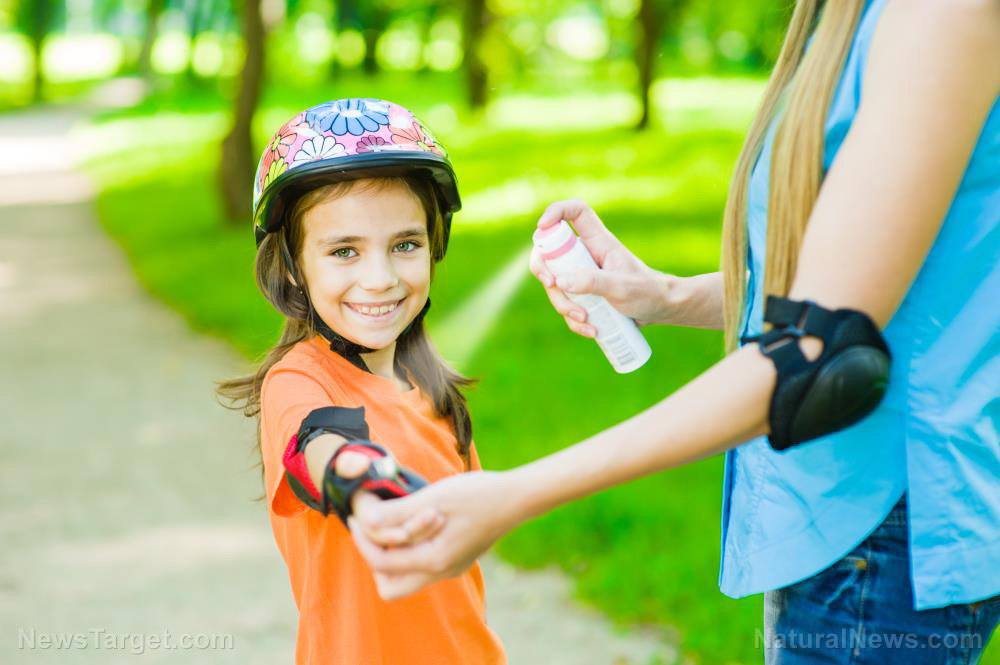Get up and get moving: 15 Ways to make your days more physical
12/05/2019 // Grace Olson // Views
Tags: bug out, exercise, fightobesity, fitness, goodhealth, home gardening, how-to, immune system, longevity, off grid, physical activity, preparedness, prepping, prevention, slender, survival

This is a serious problem, especially in a disaster. However, there are ways you to become more physically active despite your busy schedules. (h/t to TheOrganicPrepper.com)
15 Ways to get moving
When people think of becoming "active," they may think of gym memberships and strenuous exercises. While both have their perks, there are simpler ways to incorporate physical activity into your day.
- Set a schedule for exercise — People often cite a busy schedule for their lack of exercise. Turn this situation around by setting up a schedule for exercise. Locate a 30-minute free time during the day and allot this for exercising.
- Take up gardening – Not only will you be more physically active, you will also have food to eat. Additionally, exposure to nature has beneficial effects on your overall health.
- Catch up on house repairs – This includes yard work or fixing some floorboards. This will also prepare the house for any disasters. Overall, these tasks will get you moving.
- Make the most of your breaks – Take a short walk around the office or in the neighborhood during your break.
- Play with the kids and/or pets – Kids can get caught up in gadgets, so it's best to encourage them to play outside. Having a pet, like a dog, and playing with them is also one way to be more physically active.
- Invest in a stationary bike – Instead of just sitting or lying down while watching TV or listening to music, you can pedal on a stationary bike to get your heart pumping.
- Take the stairs – Depending on which floor, consider taking the stairs instead of the elevator. If the floor is several levels up, get off one or two floors earlier then take the stairs the rest of the way.
- Park far from the entrance – Squeeze in some walking before doing groceries or getting to work.
- Get off at least one stop early – If you take the bus or any public transportation, get off early and walk the rest of the way.
- Organize the house – This is also a good time to count supplies and make a list of things you still need. You can also consider hiding spots for your food and water supplies.
- Go to places where you can walk – Parks are ideal for walking. If the weather is not good, you can always go to the mall, grocery store or library for a quick walk or window-shopping.
- Take up an active hobby – Photography, dance and hiking are only some of the hobbies that involve physical activity. Try something new and make new friends along the way.
- Plan physical activities for a family outing – Get the whole family involved. You can plan to ride bikes, swim at the beach or play frisbee at the park. Even children need to be prepared for any emergency. Take this time to teach them about the importance of physical fitness.
- Join a class or group – Check online and see if there are groups that have active events, like a charity walk or a marathon. You can also learn an active hobby from these classes, like ballroom dancing or yoga.
- Form a group – If you're too shy to join a group, you can always form one yourself. Find friends that have the same mindset as you and form a walking group or other physical activity. Encourage each other and help one another focus on your goals.
Being physically active is hard at first, but once you've developed a routine, it will be much easier. Learn more about the importance of physical health during an emergency at Survival.news.
Sources include:
Related Topics
bug out exercise fightobesity fitness goodhealth home gardening how-to immune system longevity off grid physical activity preparedness prepping prevention slender survivalLatest News
Related News
07/12/2023 / By Zoey Sky
07/12/2023 / By Zoey Sky
07/04/2023 / By Olivia Cook
07/04/2023 / By Zoey Sky
Take Action:
Support Natural News by linking to this article from your website.
Permalink to this article:
Copy
Embed article link:
Copy
Reprinting this article:
Non-commercial use is permitted with credit to NaturalNews.com (including a clickable link).
Please contact us for more information.
Please contact us for more information.























